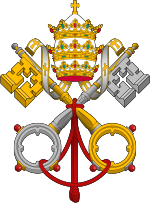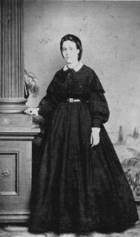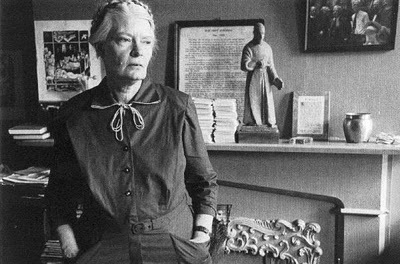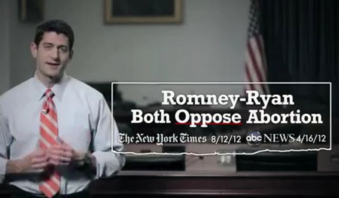Barry Hudock's Blog, page 36
November 27, 2012
A rant unworthy of him: Anthony Ensolen on CST
 Anthony Esolen is an extraordinary writer, whose work I have often enjoyed. I first encountered him several years ago, as a subscriber to Touchstone, and can still remember admiring his “Body and Soul Uplifted” and reading passages from “Dozens of Cousins” aloud to my wife.
Anthony Esolen is an extraordinary writer, whose work I have often enjoyed. I first encountered him several years ago, as a subscriber to Touchstone, and can still remember admiring his “Body and Soul Uplifted” and reading passages from “Dozens of Cousins” aloud to my wife.
And so it caught my attention to see that he has embarked upon a series of articles on Catholic social thought in Crisis magazine (an online only publication in recent years). To see him put his gifts to the cause of deseminating that body of doctrine seemed to be a very welcome thing.
I was disappointed, then, that the first installment (posted yesterday) amounts to not much more than a long and rather partisan rant. Imagine — he proposes in a long list – one absurdly exaggerated and caricatured scenario after another: using the Boy Scouts to justify street gangs, Michelangelo’s art to justify porn, or St. Francis’s teaching to justify looting. And then, after three and a half paragraphs of this, he gets to his point:
[I]magine anything most absurd, and you have not yet approached the absurdity of those who claim that Catholic Social Teaching implies the existence of a vast welfare state, bureaucratically organized, unanswerable to the people, undermining families, rewarding lust and sloth and envy, acknowledging no virtue, providing no personal care, punishing women who take care of their children at home, whisking the same children away from parental supervision and into schools designed to separate them from their parents’ views of the world, and, for all that, keeping whole segments of the population mired in a cycle of dysfunction, moral squalor, and poverty, while purchasing their votes with money squeezed by force from their neighbors.
And so immediately we are presented with a towering straw man. There are, of course, in our day varying interpretations and readings of Catholic social teaching and what it means in the concrete of the life of society, and good and bright people often disagree with one another on some of it. But is there anyone, among those who actually take seriously the idea of a Catholic magisterium and, within that, Catholic social teaching, whose thinking this accurately describes? Actually, is there anyone at all? It’s merely a distorted and silly caricature of the serious thinking that, it seems, Professor Ensolen intends to oppose in his series. Those who share his proclivities will, I suppose, be inclined to nod and even cheer, but it’s a cheap applause line at best.
“I’m sick of it,” Esolen says, and then launches into another list, now of those things of which he is sick. And what he is most sick of are people who fail to understand that Catholic teaching is “all of a piece.” Esolen writes:
I’m sick of hearing that Catholic teaching regarding sex and marriage is one thing, in that old-fashioned trinket box over there, while Catholic teaching regarding stewardship and our duties to the poor is another thing, on that marble pedestal over here. I’m sick of hearing that Catholic teaching regarding the Church and her authority is one thing, the embarrassing Latinate red-edged tome tucked away in that closet, while Catholic teaching regarding the laity is another, and pass that bread this way! No, it is all of a piece. What the Church says about divorce is inextricable from what she says about the poor. What she says about the presence of Christ in the Eucharist is inextricable from what she says about the respects in which all men are created equal—and the many respects in which she insists upon a salutary inequality. When we fail to see the integrity of the faith, not only do certain truths escape our notice; the rest, the truths we think we see, grow monstrous, like cancers, and work to destroy the flesh they once seemed to replace.
Now, he is, without a doubt, on to something here, and I whole-heartedly join him in his frustration over those who “fail to see the integrity of the faith.” As should be clear from many posts on this blog, I’m all for keeping together the fullness of the faith of the Church as an organic whole — those parts that challenge the “conservatives”  among us as well as those which challenge the “liberals.”
among us as well as those which challenge the “liberals.”
Professor Ensolen seems intent only on challenging the latter folks. His criticisms in the paragraph quoted just above are well worth making. But the criticisms that didn’t seem to come to his mind in the course of his rant are glaring in their absence.
If we’re to criticize those who ignore the Church’s teaching on marriage and treasure its teaching on our duties to the poor, let’s also blast those who treasure the first and ignore the second. As we castigate those who dismiss what the Church says about the magisterium’s authority to teach but embrace its teaching on the laity’s role, let’s also reprimand those who dismiss the first while embracing the second. And so on with the other examples he offers in that paragraph.
And while we’re being “sick of” some people, let’s also be sick of those for whom the Church’s teaching on the relative nature of the right to private property is a socialist principle disguised in pious garb, while its teaching on marriage is essential to the health of society. Or those for whom the social nature of the human person is a vague and idealistic doctrine with little relevance to the important business of policy and budget, while its teaching on human dignity, especially the dignity of the unborn, is a doctrine with meaning and bite. Or those who dismiss the call to confront the social structures that keep people poor as dangerous liberation theology while obsessing over the plenary indulges associated with the Year of Faith.
We must say to all Catholics who tend to pick and choose what’s most important based on political or personal preferences, including those who escape Ensolen’s notice: it is all of a piece. In fact, isn’t it safe to say that the readership of Crisis will tend to fall more often, inadvertently or not, into the errors Ensolen fails to mention? There are among Crisis readers (and authors) some who tend to be in their own ways – to use Ensolen’s words – ”Americans first and nominal Catholics later,” but Ensolen isn’t mentioning those ways.
Honesty, fairness, and taking seriously the teaching of the Church demands that we do. I hope that the rest of Professor Ensolen’s series on Catholic social teaching will more successfully live up to this writer’s great insights and gifts.


November 12, 2012
“I want to live and die for God”: Henriette Delille
[image error]This week marks the 150th anniversary of the death of an important and fascinating figure in American Catholic history. Henriette Delille, who died on November 17, 1862, was declared “venerable” two years ago by Pope Benedict XVI. That’s a recognition that she lived a life of heroic virtue, two steps removed from canonization. Though her birthdate is uncertain, she was probably born in 1812 or 1813, and so we stand at the 200th anniversary of her birth as well.
Henriette’s background, life, and ministry are marked dramatically by the distinctive era and place in which she lived her life. They are also in many ways a monument to Catholic social teaching on human dignity.
in many ways a monument to Catholic social teaching on human dignity.
Henriette was a Creole woman – free, mixed race, and light-skinned – of New Orleans. Her mother was of one-quarter black ancestry (known at the time as a “quadroon”), as well as French and Spanish ancestry. Henriette’s great-great grandmother had been brought from Africa as a slave, freed after the death of her owner, and later saved enough money to buy her own children out of slavery. (Interestingly, in a sign of the moral blind spot that so many of the time lived with, one of the daughters she bought out of slavery went on to become a business owner and also slave-owner herself.)
Henriette’s father was an aristocratic white man, born in France, who took her mother as a mistress. In the New Orleans of the day, under the cultural system known as placage, a mixed race woman was expected to play the role of mistress to a wealthy white man, forming with him a second family alongside the one he raised with his real wife. They were “kept women” who lived comfortable and luxurious lives. (The painting at the left, of “Creole women of color out taking the air,” is b[image error]y Édouard Marquis, a New Orleans artist of the mid-nineteenth century.) As such, Henriette’s parents were never married.
This is exactly the life that Henriette’s sister lived, and it was the one Henriette was expected by all around her to live, too. As a teen, she attended balls, the point of which were to introduce her to the businessmen of town. At one of these balls, she met Sister St. Marthe Fontier, a religious sister whose lifestyle impressed her and fired her own spiritual imagination.
She wanted to become a religious sister but was unable to join the Ursuline or Carmelite sisters in New Orleans, because they only accepted white women. During the 1840′s, with a group of friends, also mixed race young women, she began serving the elderly and the poor of New Orleans — both slaves and free people – and sharing the Catholic faith with them. They would become the Sisters of the Holy Family.
New Orleans church records indicate that Mother Henriette, as she came to be known, stood frequently in the role of godmother at baptisms. She openly criticized the placage system as a violation of the sacrament of marriage.
When she died in 1862, around the age of 50, there were 12 members of the community. Again, a sign of the moral blind spots that seem to be inherent in human nature, even among those in whom we see moral greatness: Henriette’s will indicates that upon her death the slave she owned was to be freed. Are there other canonized saints who were slave-owners? I don’t know. But if she is canonized, there will be one.
Her community continued to grow for the next century, eventually to over 400 members. The order still exists today, with over 100 sisters, in New Orleans. Hurricane Katrina devastated much of their property, including a nursing home for the elderly they run, and damaged or destroyed some of the already sparse written records related to Mother Henriette’s life.
One of the items that remains, though badly damaged by the storm, is a prayerbook that was owned by Henriette. One of the notes written in her own handwriting, in French, on the margins of its pages is: “I believe in God. I hope in God. I love. I want to live and die for God.”
(I did some preliminary work for an article on Henriette Delille for a Catholic publication, which ultimately was not published. But an interview I did with the current congregational leader of the Sisters of the Holy Family, Sister Eva Regina Martin, SSF, was helpful for this post, and I offer her my thanks for her time. Other sources for the above material include this, this, this, and this.)


November 10, 2012
Dorothy’s cause
 From the USCCB yesterday:
From the USCCB yesterday:
WASHINGTON—The U.S. bishops will engage in a canonical consultation regarding the cause for canonization of Dorothy Day, a pacifist and convert to Catholicism from New York City.
This consultation will take place during the bishops’ General Assembly November 12-15 in Baltimore.
I was not familiar with this particular aspect of the canonization process and don’t remember hearing about it related to other causes in the past. I suppose that’s because it’s more often a local/regional affair, whereas Cardinal Dolan has chosen to make this one, for the bishops, a national one. The release explains:
The canonical consultation is a procedural step in the process toward canonization. Church law governing canonizations as found in the Vatican document Sanctorum Mater requires that the diocesan bishop promoting a canonization cause to consult at least with the regional bishops conference on the advisability of pursuing the cause. Cardinal Timothy Dolan, president of the U.S. Conference of Catholic Bishops (USCCB) and head of the Archdiocese of New York, is seeking the consultation of the full body of bishops.
The full text of the USCCB release, including a summary of her life and work, is here.
It’ll be a fine day when this canonization happens. If you’ve never read Dorothy’s diaries, they’re well worth the time. The words on those pages are arresting in the way they reveal, at the time same, her radiant sanctity and her undeniable humanity.


November 9, 2012
New “Holy Mass for the New Evangelization”: Have a look
The Vatican has released the official translations, ready for use, of a brand new Holy Mass for the New Evangelization. As the title suggests, it’s a special Mass (collects and readings) on the theme of the new evangelization. The entire text of the Mass in English is here.
I think it’s quite good, with prayers that are (though predictably a bit clunky in the approved English) thoughtfully written and readings that are very well-chosen. All of it has the strong proclaim-the-Gospel-to-the-world theme that it should have, of course. But it also prominently includes ideas about our duty to live our daily lives authentically in goodness and love (second readings) as well as strong strands of the social justice element of living and proclaiming our faith (especially in the collect and Gospel).
Priests and deacons will have plenty of directions to choose from when preaching on the new evangelization during this Mass, including the ideas that (as Blessed John Paul II insisted) living and sharing the Church’s social teachings is an essential aspect of the New Evangelization.


Sometimes…
November 3, 2012
“Do the math”
 At The American Conservative, Jeremy Beer uses satire to make an important point more effectively, even devastatingly, than I have seen it made or been able to make it myself all season:
At The American Conservative, Jeremy Beer uses satire to make an important point more effectively, even devastatingly, than I have seen it made or been able to make it myself all season:
I’m sick of these holier-than-thou purists who say they won’t vote for Romney because he was once pro-choice and still supports various exceptions, or because he once invested in a company that made money by incinerating aborted fetuses, or God knows what else. Some pro-lifers even want to drag completely unrelated issues into the conversation — “torture,” preemptive war, even economics!
If you’re pro-life, Catholic, and of a conservative disposition, isn’t it obvious that the Mormon/Randian ticket is the only choice? I mean, the only pragmatic choice? This is politics, people! It’s all about compromise and getting your hands dirty. And I, for one, refuse to compromise my pro-life beliefs and dirty my hands by refusing to compromise my pro-life beliefs and dirty my hands. Even if that dirt is really blood.
Anyway, just do the math. Practically speaking, fighting abortion — and being pro-life! — is all about overturning Roe v. Wade. Nothing else matters. So, just multiply the percentages attached to the following outcomes to see that you have a moral obligation to vote Romney/Ryan on November 6: Chance that Supreme Court justice retires/dies in next four years (15 percent), times chance that President Romney appoints a justice he believes would vote to overturn Roe (50 percent?), times chance that said justice would actually vote to overturn Roe (40 percent? cf Republican appointees Souter, Kennedy, O’Connor, Stevens, etc.), times chance that Court takes up a case that challenges Roe during term of new appointee (generously, 20 percent), times chance that new appointee remains key swing vote in said case when taken up (again, generously, 20 percent).
Dude, that’s a .12 percent chance that electing Romney would result in the end of Roe! How can you ignore that, you purists? Did you say something about Iran? Syria?
There you go again, changing the subject. Some of us prefer to be practical.
Kudos, Mr. Beer. H/T to Mark Shea.


October 26, 2012
Ironic, really
Priest warns of “wolves in sheeps clothing” with “sinister” intent to misrepresent the Church’s teaching, then spends seven minutes doing to the Church’s teaching what Salvador Dali used to do to clocks. Brace yourself.


October 24, 2012
The third party we need
Would that this could come to pass! Here’s a stimulating proposal from John Slattery, a contributor to the Daily Theology blog, on the third party we need. Sign me up. (All we need now are a few of the $50,000,000 donations that John mentions in order to make it realistic and viable.) John offers an initial proposal for the party platform he has in mind:
Central Platform: The Inherent Dignity of Every Life: Every life must be protected and valued from conception until natural death. I interpret this as necessitating several distinct ideas:
1. The end of the death penalty and a complete reform of the prison system throughout the US.
2. The end of abortion and an enormously expanded adoption system throughout the US.
3. The drastic reduction of the US military.
4. The complete overhaul of the public education system.
John explicates each of these four points in his post. He also readily acknowledges that there are other issues related to the central platform that might be included here, and I’d agree. I tend to think, for example, that immigration and the economy are more closely related than education. But I share John’s sentiment that “this is a party and a vision for the country I could belong to and fight for with all the moral strength I can muster.”


October 21, 2012
Biden: Nope, not a single conflict. Ryan: Me neither.
 America magazine has posted the text of new interviews with our two Catholic vice presidential candidates, Vice President Joe Biden and Congressman Paul Ryan. It’s interesting and helpful. It’s also brief, which probably makes it too easy to try to criticize either candidate for what they say or don’t say in answers of a few sentences to big and wide-ranging questions.
America magazine has posted the text of new interviews with our two Catholic vice presidential candidates, Vice President Joe Biden and Congressman Paul Ryan. It’s interesting and helpful. It’s also brief, which probably makes it too easy to try to criticize either candidate for what they say or don’t say in answers of a few sentences to big and wide-ranging questions.
But the headline to the whole thing, to my mind, is this: Neither candidate reports, when asked, experiencing any conflict whatsoever between his political life and his Catholic faith. (See the final question of both interviews.) I confess to being flabbergasted.
Joe Biden has never felt conflicted, in the least, throughout a long political career that has consistently defended and supported legal abortion? He didn’t feel conflict sitting in that room in those moments of decision-making about carrying out the assassination of Osama bin Laden? He hasn’t occasionally even wondered about the wisdom of the HHS contraception mandates that his boss’s administration has championed?
Paul Ryan didn’t have any hesitations as he worked out and formally offered a federal budget proposal that includes steep cuts to food stamps, healthcare for children and the disabled, and basic social programs? There has never been a single peep of protest from his Catholic heart and mind as he has gone about championing the cold individualism of Ayn Rand?
I’m not saying I expect either man to suddenly burst into tears and cry out some loud mea culpas. They’re trying to win an election, after all. But it would have been a simple affirmation of their humanity to hear Biden say, “Yeah, I have struggled mightily with this abortion issue, because after all we’re talking about millions of abortions every year here, and that’s a lot of fetuses that my church says deserve the protection of law, but in the end, I’ve just had to follow my conscience and allow women to make up their own minds”; or to hear Ryan say, “When the U.S. bishops conference and so many prominent ethicists and theologians and religious sisters and other leaders in the church all came down so strongly against my budget proposal, it did cause me to think again about the sort of budget I’d put together, and I do regret that if passed it might make life a little harder for some folks, but I know in the end that it’s just too important that we get this deficit thing straightened out, for the sake of all of us.”
Is that what it takes to run for such high office — a completely unquestioning self-confidence in one’s every conviction and idea, able to withstand even the fundamental opposition of the teachings and witness of the church which has supposedly formed the bedrock of one’s faith and moral convictions throughout one’s entire life?
Maybe I’m just envious. The older I get, the more riddled with second-guessing self-doubt I become! The more I experience life, the more I realize there are so many different ways to look at the events, ideas, and problems that fill it that I just have to be missing something in most cases.


October 20, 2012
Thanks be to God! St. Marianne Cope and St. Kateri Tekakwitha!
 This is a weekend for American Catholics to rejoice and give thanks! Tomorrow the Pope will create seven new saints for the universal Church, and two of them are American figures.
This is a weekend for American Catholics to rejoice and give thanks! Tomorrow the Pope will create seven new saints for the universal Church, and two of them are American figures.
Marianne Cope was the Sister of Saint Joseph who is best known for her ministry to the lepers on the Hawaiian island of Molokai, after responding with several of other members of her community to the request of St. Damien of Molokai for help. Before moving to Molokai, she lived in Syracuse, NY, and founded a hospital there. (Unfortunately, Rome Reports is mistakenly saying in their report this week that she lived in Philadelphia! A better video, though not brand new, is here.)
The other is Kateri Tekakwitha, who becomes the first native American saint! Kateri was born and raised in central New York state.
Frankly, we’re especially excited about this among my own family, because we’ve had some personal contact with each of these great women. My wife and kids and I lived outside of Syracuse, NY, for 4 years. During that time, we were able to visit the tomb of Marianne Cope, which is at convent of the Sisters of Saint Joseph there.
We were also able to visit the site of the Mohawk village where Kateri lived most of her life. It’s outside of what is today Fonda, NY, and is now the National Kateri Tekakwitha Shrine. (I think what my kids remember most is that it was an incredibly hot July day, and they mostly wanted to get back in the car for the air conditioning!)
St. Marianne Cope, pray for us.
St. Kateri Tekakwitha, pray for us.







